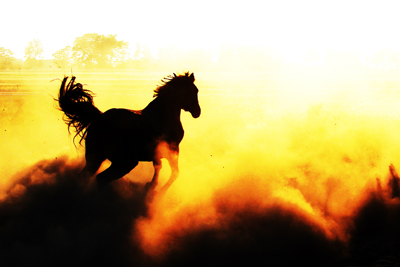Fine, abrasive particles suspended in the air are the enemy of all precision equipment. Dust penetrates cameras, lenses, computers, disks and every other item of photographic equipment. The air in every part of the world is filled with particles of every description, but the situation is arguably at its worst in the dry environments found in areas such as Africa and central Australia. In some areas there may have been no precipitation for many years and the slightest breeze or movement over the surface raises clouds of fine dust. Travelling along dirt roads around Alice Springs or across the Namib Naukluft desert in Namibia for a couple of hours can ruin unprotected photographic equipment.
 |
| Public domain image by Ulrich Peteron |
When working in such environments it is essential to carry appropriate plastic bags into which items can be placed. A simple black rubbish bag offers ideal protection for a complete bag or case of photographic equipment. Smaller bags can be kept in pockets and used to cover cameras, lenses or computers when they are not in use.
However, wrapped photographic equipment is of no use for capturing images. The camera has to be exposed to the harsh environment every time a picture is created. The best approach is to keep equipment at the ready but covered by an easily removable plastic bag. Make the effort to return items to their protective covers when not in use. It is also worth carrying appropriate cleaning equipment so that lenses and other items can be routinely rendered dust free. At the very least, a thorough cleaning of all equipment should be undertaken every twenty-four hours. However, in significantly contaminated environments much more frequent cleaning will be required. Hold cameras and lenses upside down and use a blower to dislodge dust particles which then fall away from the equipment.
Dust on the reflex mirror of an SLR may seem unimportant because the mirror locks up while the shutter opens, but accumulated dust works loose and inevitably finds its way onto the film or sensor. Digital cameras are particularly vulnerable to accumulated dust. CCDs are static and attract all types of dust, lint and so on. Tiny particles on the surface of a sensor reveal themselves as black spots in images. Although these can be removed at a later date the work involved may be considerable. Sensors are also very delicate and easily damaged by incorrect cleaning. Specialized sensor-cleaning kits are available, and manufacturers' instructions should be observed.
Fine dust suspended in the air settles on lenses and may leads to a distinct softening of colours and general lack of contrast and sharpness in an image. It is therefore important to keep the front and rear elements of a lens spotlessly clean.






